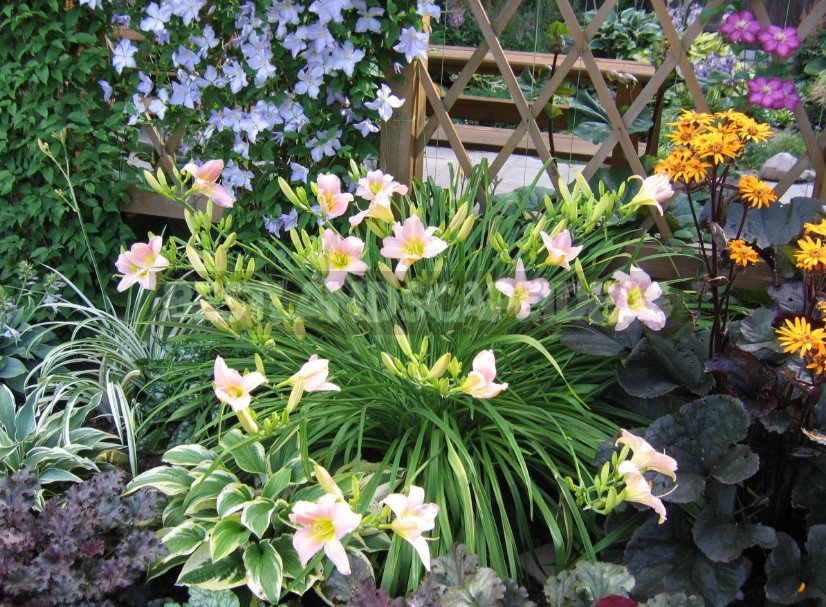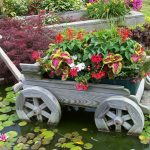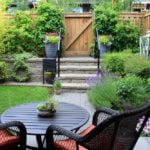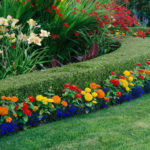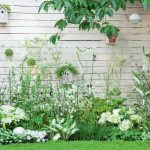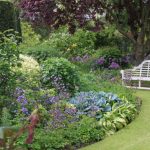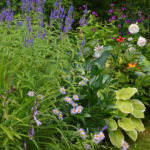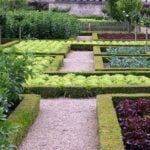In this article I will tell you how to use contrasting combinations of plants to create harmonious garden compositions.
Contrast and texture are our weapons
For a long time no one is surprised by the bright and colorful flower beds, harmonious mixborders, impressive flower groups and borders, most of which are decorative and deciduous plants. The modern flower assortment is literally overflowing with cultures, the main advantage of which is elegant, diverse in shape and texture, multi-colored highly decorative foliage.
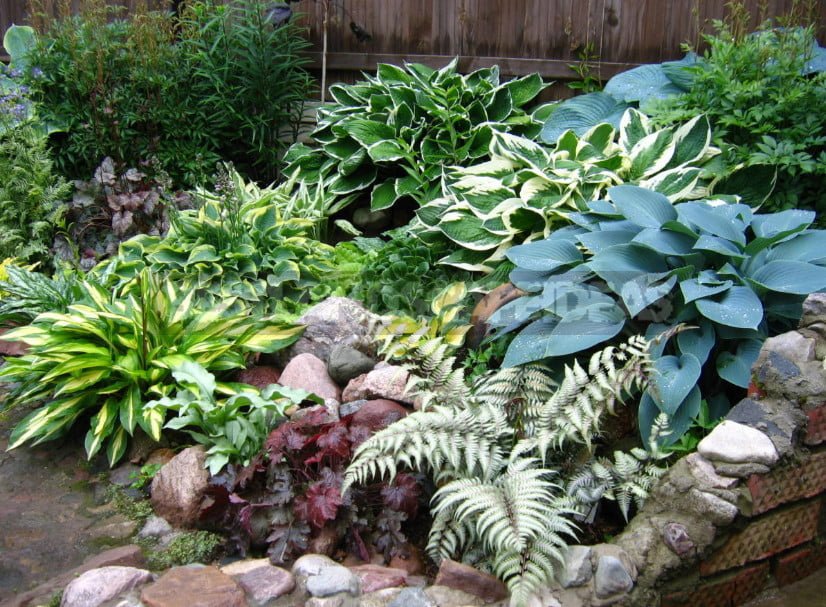
Every year there are hundreds of new varieties, as well as variegated, purplish, yellow and sisal forms of other perennials. Moreover, the rich imagination breeders create such novelties-masterpieces that combine two decorative qualities: amazingly elegant foliage and luxurious flowering — thereby further complicating the work of garden designers.
As a rule, such plants themselves are so original and self-sufficient that it is not easy to find them worthy companions in the flower garden.
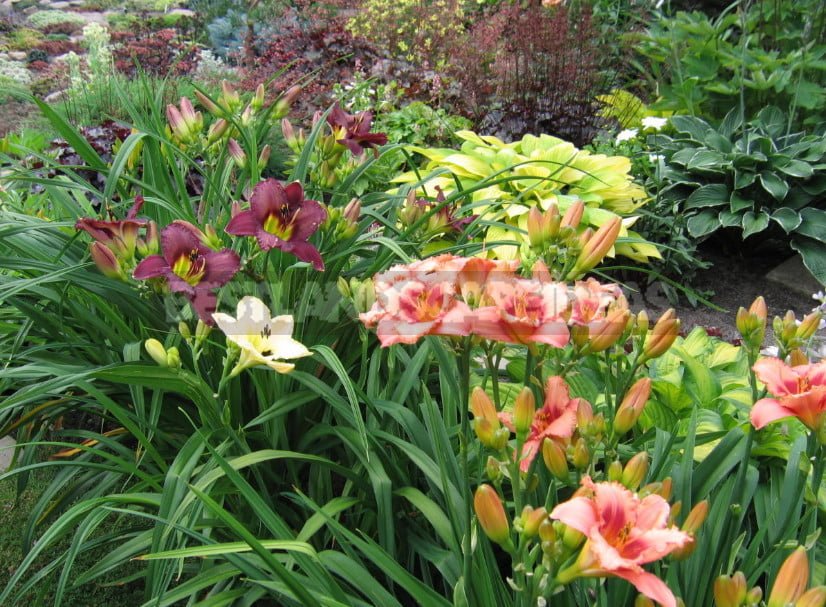
Correct and well-written flower garden, which contains plants with a striking textured or colourful foliage, certainly attracts attention. But two floral arrangements made up of the same set of ornamental plants can look completely different. One of them will cause delight and admiration, the other, on the contrary, may differ disharmony and inexpressiveness. Why is this happening?
The planning and design of flower beds is close to the art of painting, where color and shape play a major role. The empty space in the flower garden is like a blank canvas for the artist, on which he embodies his fantasies and desires with the help of a magical game of colors and shapes. For the grower, the task is complicated, because the “picture” will be lively, voluminous and constantly changing, and a harmonious combination of shapes and colors in the created composition is not easy to achieve. There are no ready-made recipes and strict rules, but the florist has many opportunities to show their individuality. Nevertheless, there are some generally accepted principles that should be guided.
The role of contrast in garden composition
One of the most effective and common methods of combining plants used by designers in the preparation of flower beds – contrast. In garden design use both color contrast and contrast forms, and most often they are used simultaneously.

This principle of combination is best suited for decorative-deciduous plants, because the color and shape of the foliage — their main advantage, which must be emphasized and highlighted. Contrasting plants, their color, leaf shape and habit make the garden more lively. The play of different colors and shades, lines and shapes creates flower beds that reveal the style and character of the garden.
Someone prefers a bright and colorful country style, someone nicer calm-tone in tone-composition of Japanese gardens. In the first case, color contrast dominates, in the second preference is given to the contrast of forms.
Correctly made flower beds on the basis of contrasts of various landscape styles turn out impressive and expressive. However, to avoid chaotic can not abuse contrast, be sure to combine it with the nuance – a subtle softening transition similar to each other slightly different shapes and colors.
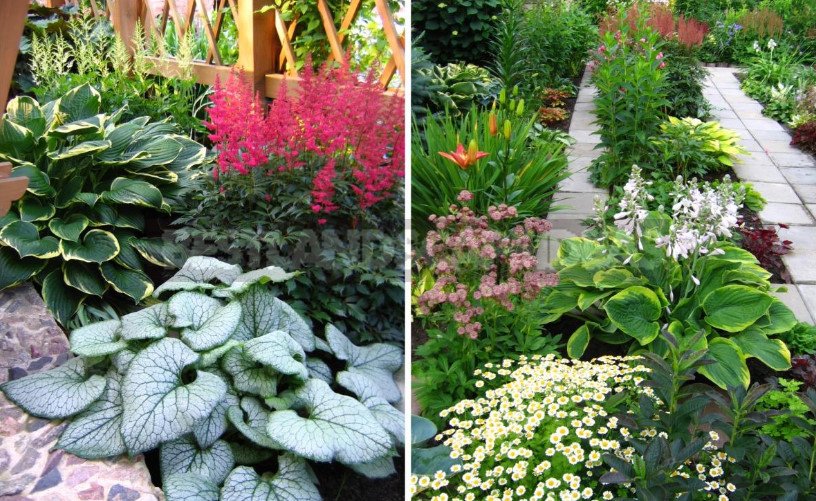
The contrast of forms
Garden plants have different shapes. For example, the rounded shape of the Bush in many plants. A strong contrast with them form plants having the form of columns. To soften this contrast and make an element of movement will help plants that have in their form diagonal lines – fountain-like bushes.
Advantageously emphasizes the dignity of the partners contrast the shape of the foliage. Using plants with leaves of different sizes, shapes, shapes and textures can achieve an expressive effect.
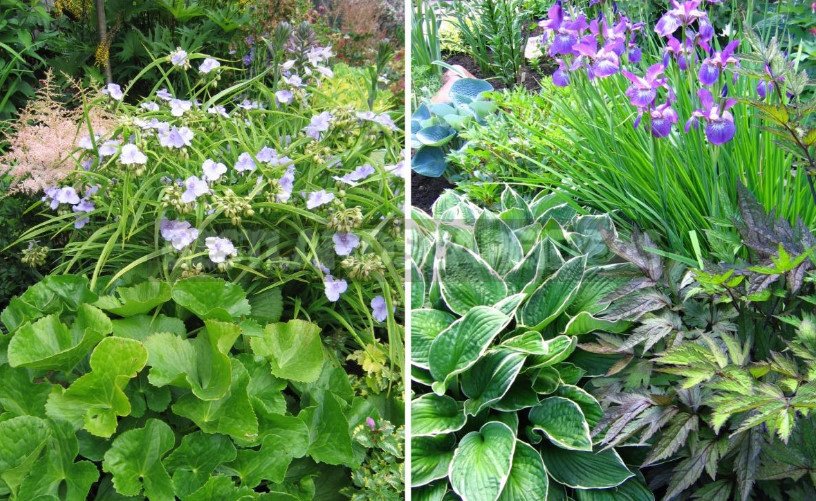
In certain combinations, leaf contrast is more important than color contrast. Clear rounded leaf form a great contrast with filigree carved pinnatisect foliage. Add a group of swept linear leaves-and the composition will immediately become more dynamic. Here, each plant individually does not lose its individuality, and all together make up a single harmonious whole, where each partner becomes more expressive due to the presence of a contrasting neighbor.
Combine plants with leaves of delicate textures with plants whose leaves have a rough texture; shiny-with matte, convex relief — with flat and smooth, soft fleecy-with satin and silky.
Color contrast
Form is an important means of composition, and the color emphasizes it and determines the overall impression. Properly and carefully pick the color contrasts. Do not forget that any color on the background of contrast is perceived brighter, and the contrast is stronger, the greater the differences in light and saturation.
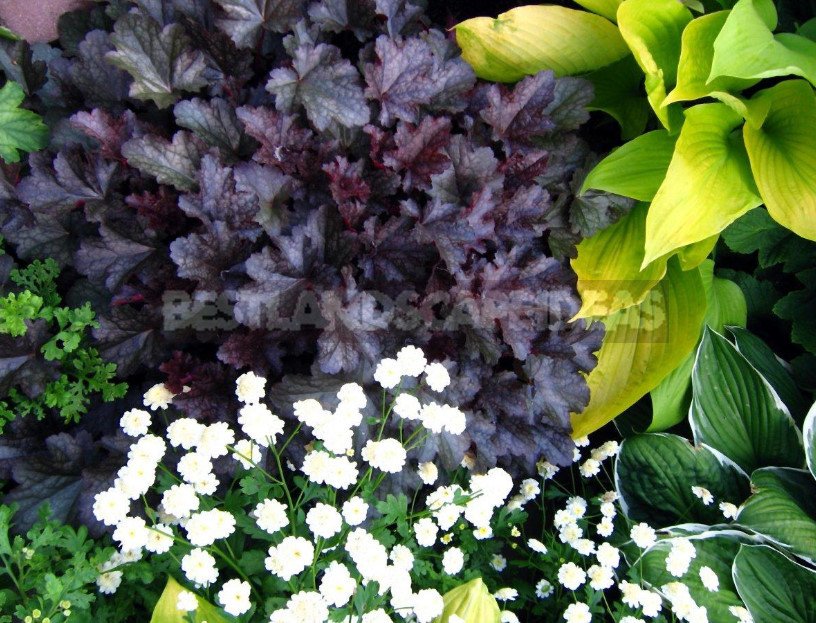
Use this rule to highlight a particular plant, emphasize its advantages and originality with the help of color contrast. Observe the principle: cool color combined with warm. All intense colors and shades of yellow, orange and red are warm tones. They are contrasted and well combined with cold and restrained shades and colors: green, blue and purple. Such combinations create a strong contrast, thanks to which there are rich and colorful compositions.
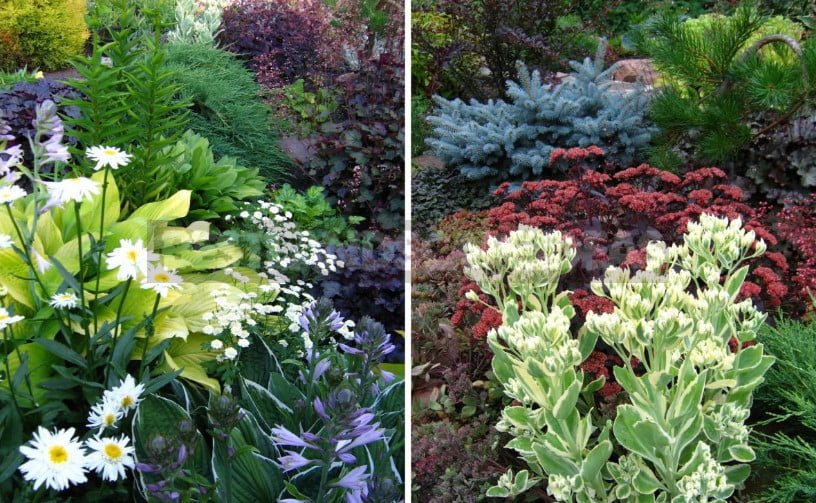
To soften and balance the sharp contrast and emphasize the play of color will help plants with neutralizing color: gray and white. The gray color makes other colors of nearby plants harmonious. In the flower garden, it often appears as a variant of green decorative foliage with wax or fleecy coating, creating silver, gray and bluish shades.
White is also a good partner, but when making bright contrasting color compositions, it should be used only as a binding element, since pure white color spots of large sizes cause a feeling of disharmony. Use neutralizing colors and to fill the temporarily empty spaces in a contrasting flower bed, for example, plants with white inflorescences or with silvery-gray foliage harmoniously combine the composition into a single whole.
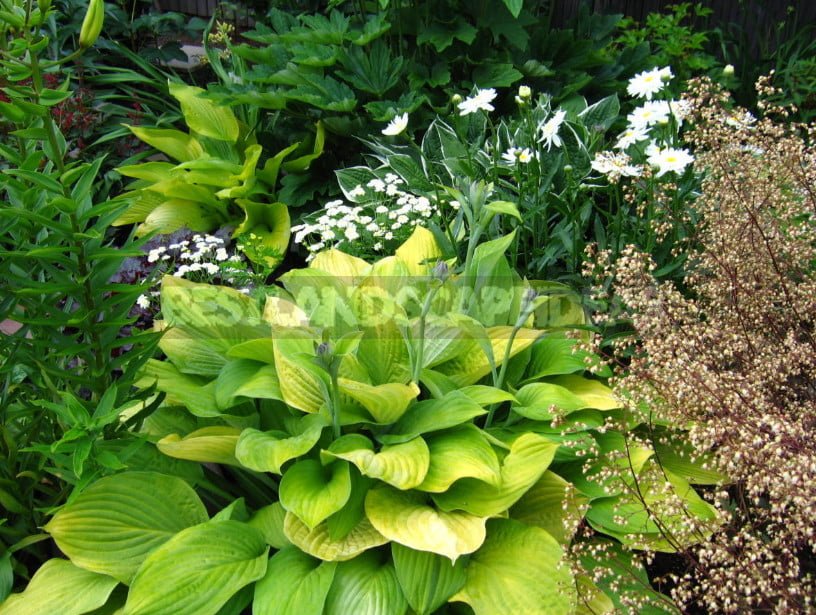
The life-affirming green in the garden also serves as a neutralizing. It emphasizes the play of color and is the perfect setting for sparkling bright colors, because it harmonizes with many colored flowers, including foliage plants, a variety of variegated forms, for which often the best neighbors flowers with green foliage.
Choosing a place for a plant in a flower garden
Don’t be afraid to “play” with the color and shape of the ornamental deciduous plants. Take a closer look at the newly acquired resident of your garden, think over several options for its placement in the flower garden.
In addition to such an important feature of the selection of partners as similar growing conditions, decide what to plant next to emphasize the dignity of bright colors and the expressiveness of the elegant forms of the new plant. Imagine how it will look at the time of flowering, whether its flowers or inflorescences harmoniously fit into the composition.
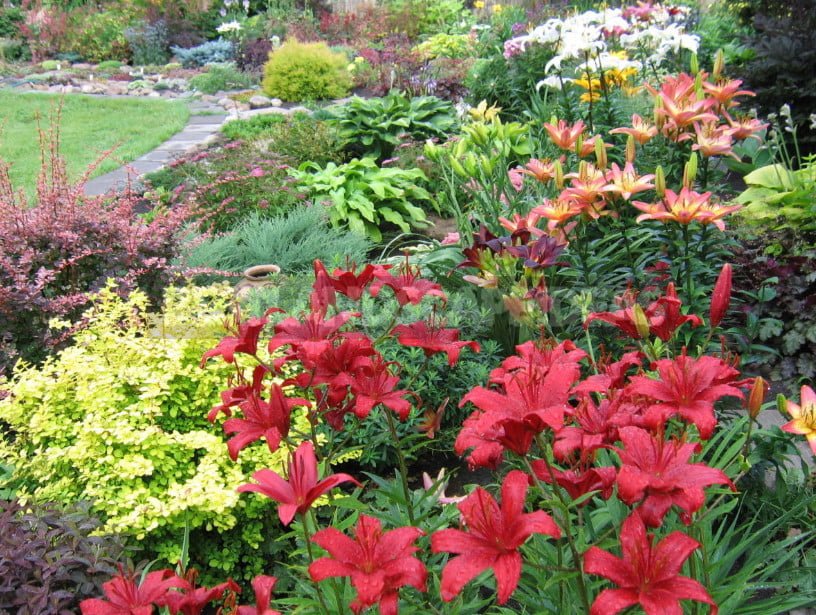
Take into account the fact that some decorative-deciduous plants reach the peak of decorative and look as bright as possible in the fall, when most other plants are already losing their colors and lush forms. Often garden designers are advised to combine these perennials in compositions with evergreen plants, as well as trees and shrubs. In such groups the principle of contrast combination looks especially attractive. Rich and colorful compositions with evergreen and winter-green plants adorn the autumn garden to the snow.
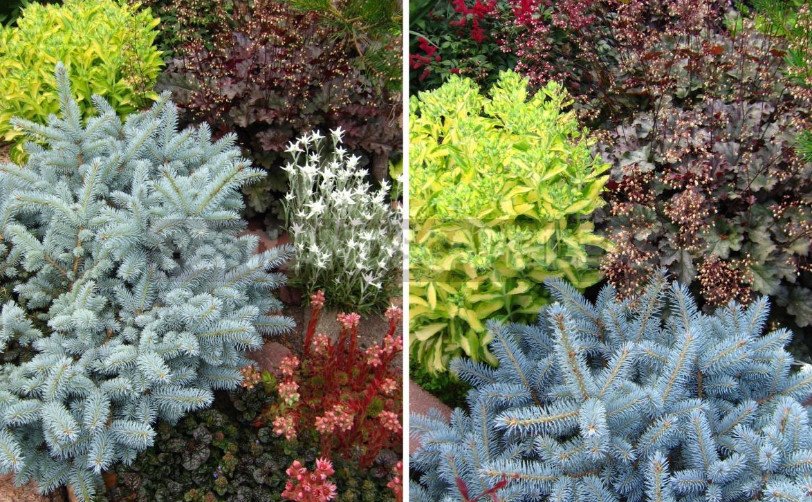
Constantly improve and shape the garden according to your taste and ideas — one of the most exciting activities. This is not an easy task, because there is a whole world of garden art, which — just like the ordinary world — is influenced by fashion and different styles. And to see the newfangled plants in all their splendor, we must make sure that each of them grew in its place, and it was surrounded by suitable neighbors.
